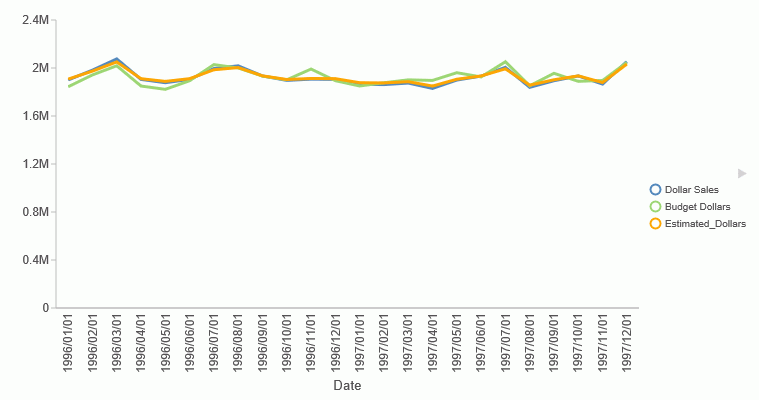Syntax: How to Create a Multivariate Linear Regression Column
MULTIREGRESS(input_field1, [input_field2, ...])
where:
- input_field1, input_field2 ...
-
Are any number of field names to be used as the independent variables. They should be independent of each other. If an input field is non-numeric, it will be categorized to transform it to numeric values that can be used in the linear regression calculation.
Example: Creating a Multivariate Linear Regression Column
The following request uses the DOLLARS and BUDDOLLARS fields to generate a regression column named Estimated_Dollars.
GRAPH FILE GGSALES
SUM BUDUNITS UNITS BUDDOLLARS DOLLARS
COMPUTE Estimated_Dollars/F8 = MULTIREGRESS(DOLLARS, BUDDOLLARS);
BY DATE
ON GRAPH SET LOOKGRAPH LINE
ON GRAPH PCHOLD FORMAT JSCHART
ON GRAPH SET STYLE *
INCLUDE=IBFS:/FILE/IBI_HTML_DIR/ibi_themes/Warm.sty,$
type=data, column = n1, bucket = x-axis,$
type=data, column= dollars, bucket=y-axis,$
type=data, column= buddollars, bucket=y-axis,$
type=data, column= Estimated_Dollars, bucket=y-axis,$
*GRAPH_JS
"series":[
{"series":2, "color":"orange"}]
*END
ENDSTYLE
ENDThe output is shown in the following image. The orange line represents the regression equation.
